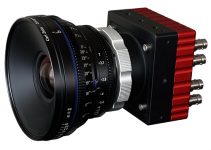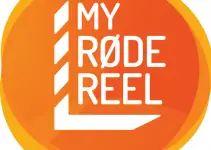Having both the mighty Red Epic cinema camera and the Panasonic GH4 side-by-side for a project might be a dream come true for many independent filmmakers working on a shoestring budget, however intercutting footage from these cameras is a whole different story.
While there are a lot of technical differences from skin colour to details levels, codec efficiency, depth of field and everything in between related to those entirely different camera systems, there are still enough chances to make intercutting between these indistinguishable. So, can the GH4 match up against the Red Epic? The guys from Lixi Studios will try to answer this question by yielding a few recommendations for those who want to make their edit seamless and flawless when shooting on both the Red Epic and the GH4.
Due to the sensor size difference between the two cameras, it will be hard to match the depth of field look right off the bat as well as the framing, so using the appropriate lenses accordingly is a mandatory consideration. The best way to compensate the depth of field differences and match the Red Epic look would be to utilise a longer lens on the GH4, or you can just move your subject way from the background to achieve the same bokeh effect in the frame.
Another tip is to use the Red Epic for your wide shots, whereas the GH4 can be the better match for your close-ups respectively. Usually, the light differences in close up shots are a lot more even. That way it will be hard to tell the difference when you cut back and forth between those two cameras.
Further, if you want to have even more control over the lens options, use the Metabones adaptor in conjunction with the GH4. This way you will be not only able to pick from a variety of lenses, such as the excellent Canon lens lineup, but the Metabones Speedbuster will also help you to open up your lens one additional stop.
Regarding the dynamic range, the best way to match footage shot on both cameras is to use the paid V-Log upgrade on the GH4 that will give you around 12 stops of usable dynamic range of the small mirrorless camera. It’s still far from the 16+ stops the Red Epic provides, but it is far more flexible and usable than using the standard picture profiles of the GH4. Utilizing an external recorder to be able to record the 10-bit uncompressed video feed out of the latter should also improve the final results.
Ultimately, each of these cameras provides their unique look, and they also have their usability differences. But the point here isn’t that there is simply no way to take a GH4’s image to the places you can take the footage captured on a camera costing 10x more. If you know their particular specifications and limitations, you can undoubtedly make these cameras work together and intercut seamlessly.
Keep in mind, though, that even for the most experienced colorists matching shots captured on two (or more) totally different camera systems might be intimidating and overwhelming, yet it doesn’t mean it’s impossible. Quite the contrary. Overall, the above tips and tricks might not be the ultimate guide for intercutting footage shot on the GH4 and the Red Epic, but these should make your life in the editing bay a lot easier, hence your workflow more efficient and effective.
[source: Lixi Studios]
Disclaimer: As an Amazon Associate partner and participant in B&H and Adorama Affiliate programmes, we earn a small comission from each purchase made through the affiliate links listed above at no additional cost to you.




So much misinformation in this video. First of All the Red Epic has a super 35mm sensor (APS-C equivalent) and not a FF one, second Red advertises 15,5 DR stops and Panasonic 12 DR stops (not 16,5 on red and 10 on Panasonic).
Valid points, Eno. But, there are some useful tips as well.
Agree.
Manufacturers DR claims are based on differing methodologies so they’re not exactly comparable. Regardless of the exact numbers, the Red undoubtedly has more DR and resolution than the GH4. The principle of using the lower quality camera for close-ups can work really well. Differences in camera are least noticeable when the framing changes. Using a colour chart and generating LUTs for each camera in Davinci Resolve is a great way to get the cameras matching even further. And, of course, speedbooster, as you suggest, is a great way of matching depth of field.
Actually Panasonic Gh4’s DR is 12+ stops in V-log (my personal measuring) and from the limited experience with the Red Epic (rented a couple of times for some big projects) it’s real DR is in 13,5 stops domain, a little bit less than my D800’s raw.
But yes, with a decent grading skill man can seemingly mach different cameras together.
V-log is certainly an improvement over cine-d, but 12+ stops in v-log is pretty generous! Personally I measured only 11 useable stops in V-log and less than 10 stops in cine-d (if I’m feeling generous). I’ve never used any of the Red cameras so I can’t comment directly on that, but it doesn’t surprise me that its real DR is somewhat less than the manufacturer quoted figure :-D. The two things that bug me about the GH4, though, are the highlight roll-off (even with v-log) is pretty abrupt – which I feel makes the DR look narrower the camera is actually capable of – and the magenta bias (also bugs me about my Sony cameras). The GH2 had some beautiful organic colour science (we won’t talk about the GH3) but I’m really not a fan of the out-of-the-camera colour from the GH4. Again V-log improves the starting point for grading and I’ve seen some really beautiful stuff shot with it – so I think it probably speaks more about my grading abilities than the camera ;-D
Well, I like the highlights roll-off in GH4 very much. I have set or cameras to 16-255 levels and in Premiere I can easily recover 1+ stops of blown up highlights.They are definitely not in RED or Alexa territory but much better then the consumer Sony product I’ve tested.
I personally enjoy the colors of Gh4. I don’t shot very much in V-LOG because I find the 8 bit internal recording a little to limiting but a custom neutral profile does the thing for me/us. I also dislike CIne-D especially for skin thrones.
I only wish GH4 didn’t have that crop factor in 4K and it’s high ISO performance to be a little bit better… But anyway, we bought 4 cameras and served us very well in those two years. I can’t wait for GH5 to arrive. 🙂
I can respect that! Personally I think the nicest roll-off and skin tone rendition I worked with was the wide-DR profile in the Canon C100/300 series… But they’re overpriced, too heavy for the form-factor, and (other than dual-pixel AF) low on features. I love the GH4 for the size and reliability (no overheating). I like the DoF with the Metabones speedbooster… But never got on with the colours. I’m hopeful for the GH5. Would love to see a little wider DR, no crop on 4K, and internal 10bit 4K60p! Don’t care about the rumoured 6K… After about 3K most people can’t see any quality difference, and I would worry they might focus on that as a headline feature, rather than giving us stronger fundamentals.
Totally agree with you.
For getting better colors out of GH4, try using the neutral profile with contrast from -3 to -1, NR from -5 to -3, sharpness from -3 to 0 and the rest of the settings on default.
Cool! Thank you 🙂
You are welcome.
Also the Portrait profile with fine tuning has some wonderful skin thrones, but for general purpose I personalty prefer a twined Neutral (as discussed above).